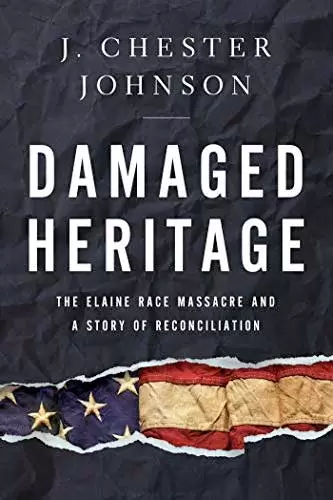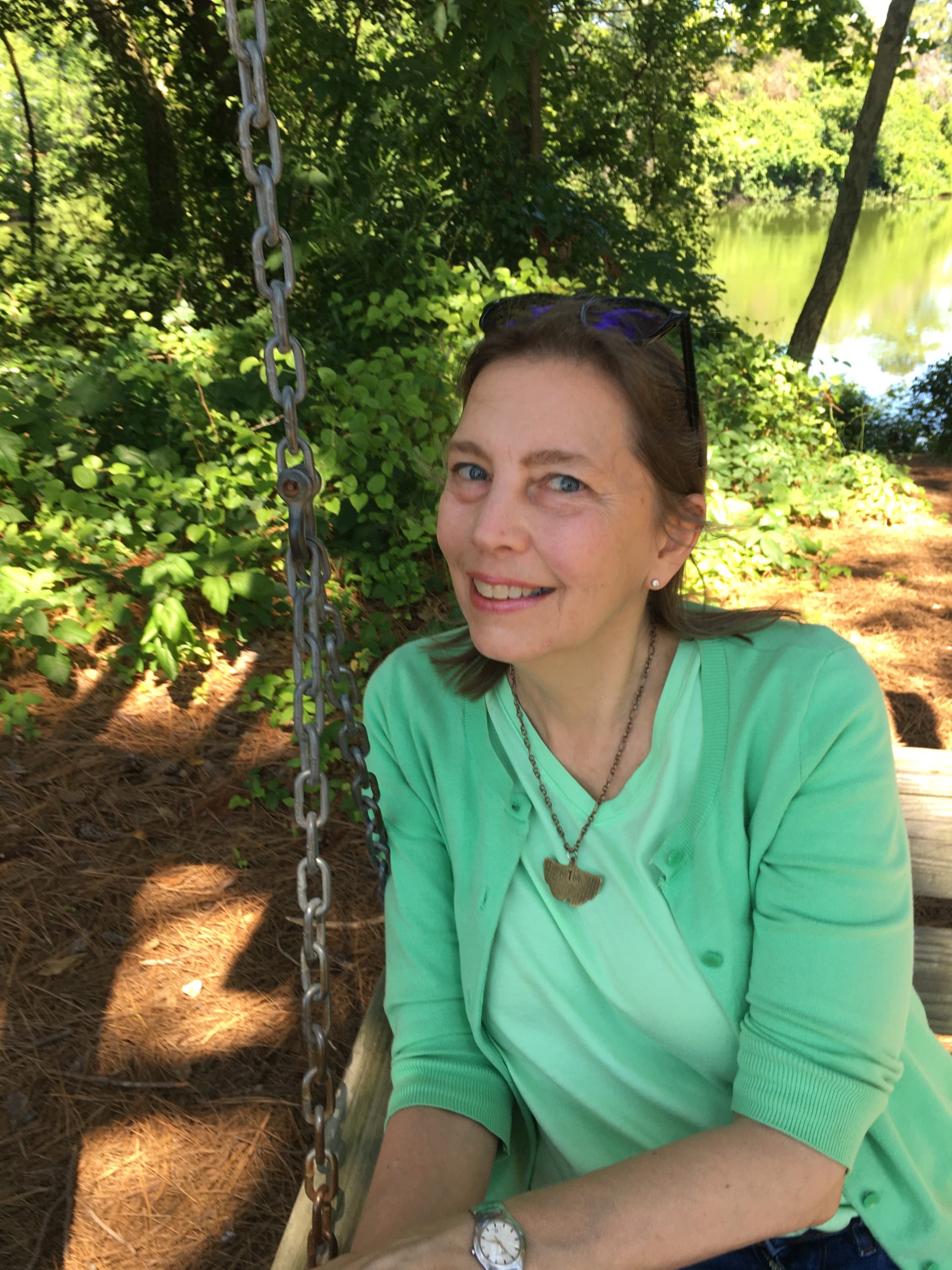Review by Melinda Thomsen

https://www.jchesterjohnson.com/
Pegasus Books, ISBN, 9781643134666
Call It By Its Name
My copy of J. Chester Johnson’s Damaged Heritage arrived on May 27th, the day after reports of George Floyd’s murder at the knee of a police officer. I finished the book in three days because Johnson’s compelling story gave me hope. In my review of Now and Then: Selected Longer Poems by J. Chester Johnson (see BigCityLit, Fall 2019), I discussed “The Mixer,” a poem about a white man whose courage enabled him to shun the prevailing racist culture and marry the black woman he loved. Johnson uses “damaged heritage” to refer to the ways racism has distorted the outlook of generations of whites, particularly white Southerners, due to “filiopietism” (an excessive reverence for ancestors and traditions). The book opens by recounting the 1919 Elaine Race Massacre in Arkansas, and how racism contaminated the integrity of the Philips County justice system.
As Johnson presents research on the Elaine Race Massacre, he leads us down a path that ends in the “genuinely human.” In the Judeo-Christian tradition, that roadmap is called “agape,” the Greek term for love. Defined as a selfless love, or love for God and for humankind, the Book of John in the New Testament refers to agape as “we in Him and He in us” (Johnson 67). C.S. Lewis defines it as the fourth and highest form of love, Charity, whose earthly rivals are Affection, Friendship, and Eros (165). Since neighborly behavior provides a community’s foundation, Johnson says we must practice “empathy, forgiveness, agape love…qualities only humans, in the image of God, can elevate beyond understanding” (195). Johnson’s chapter “Genuinely Human” illustrates the process in the form of a letter to his grandfather Lonnie, whom Johnson struggles to forgive. Becoming genuinely human adheres to the premise that, as human beings, we have much more in common than our physically or geographically derived differences of “custom[s], history, background, skin color, language, dialect, manners, and rituals” (37). By elevating our differences through racist attitudes, we ignore our basic humanity. Johnson also discerns that being genuinely human is more effectively practiced in African American churches than in white ones. As I read Damaged Heritage, I kept thinking of the Bill Wheeler quote I put at the top of my composition syllabus every semester, “Good writing is clear thinking made visible.” Damaged Heritage is not only a solid analysis, but so full of good will, it is perilous to ignore its truth.
Addressing race relations through a poetry collection like Now and Then: Selected Longer Poems by J. Chester Johnson is effective up to a point. At the time I read the collection, I instinctively felt that prose could better address this complex, ingrained behavior. So, when asked to review Damaged Heritage, I readily accepted the opportunity. I knew a book in this format could enrich and strengthen those seeds of understanding Johnson had addressed in his longer poems. As I read Damaged Heritage, I noticed he used rhetorical questions as one strategy to gain deeper insight. Johnson anticipated my own questions as I learned the story of the Elaine Race Massacre. The conflict that erupted in Philips County left at least a hundred black sharecroppers dead (the exact total is not known). Because this massacre had been left out of Arkansas history books, writers like Grif Stockley and Robert Whitaker gave the first accounts in their books, Blood in Their Eyes: The Elaine Race Massacres of 1919, and On the Laps of Gods, respectively. Damaged Heritage continues the dialogue to ascertain, not just the historical facts, but the next steps: a shared goal of reconciliation at the individual level, as denoted in Johnson’s friendship with Sheila L. Walker. At the community level, the reconciliation takes the form of a physical memorial to help the residents of Philips County heal.
Driven to find a confidant with a mutual connection to the massacre, Johnson was asked by Whitaker to meet with Walker, if she would agree to meet him, and their first conversation took the following form. First, Walker and Johnson discussed the known facts and came to a consensus on what happened. Once they agreed on the historical context, they discovered that their “respective stories remained incomplete without a circle being tied” (48). Their honest dialogue, as the “progeny of victims and perpetrators,” promoted healing and an acceptance that reflected the truth of the whites’ responsibility for the massacre (48-49). This first meeting between these new friends set the stage for the larger reconciliation, mutual support for a physical memorial to the victims of the Elaine Race Massacre for those living near the killing fields.
Johnson structures the book by mirroring his own steps through reconciliation. First, he details the facts surrounding the massacre. Next, he analyzes his grandfather’s Ku Klux Klan affiliation and participation in the massacre that was antithetical to the loving man Johnson remembered as a young boy. Third, he discusses the suffering inflicted upon the people living in Philips County. Fourth, he explains the importance of erecting a monument. The Elaine Massacre Memorial was dedicated on September 29, 2019 in Helena, Arkansas, directly across from the courthouse where 300 black sharecroppers were falsely tried and swiftly convicted of first degree murder, “and lesser crimes such as second degree murder, assault to kill, and ‘night riding’” between October 4 and November 21, 1919 (Johnson 16-17). The physical nature of the memorial was essential because, according to one African American resident, “we sweep the Elaine Massacre under the rug, but then we keep stumbling over the rug” (164). This metaphor is useful to understanding how language can vividly illustrate an event, but by itself, it is too ephemeral. The Elaine Massacre Memorial pins those facts down. If facts of the massacre are not stored in a place for future generations, the undercurrents of ambiguity will keep buckling up and tripping residents with their past. The Elaine Massacre Memorial erected with names and dates etched in stone serves the purpose of stapling that rug to the floorboards of our collected memory.
Besides being a historical account of the massacre, Johnson, the poet, employs language like a subtle netting to draw all people affected by the massacre to a better understanding of those events. His decision to use “ghosts” as a reoccurring motif, for example, creates a more accurate understanding of the emotional toll suffered when whites do not address their damaged heritage. Johnson states that this damaged heritage produces racists, and that:
so many white Americans were destined to become mere ghosts, wraiths without a will to pursue the consequences of genuinely human. For ghosts pass over landscapes without touching the fiber around them, and so much is lost as a personhood degrades…we have learned the ways of racists, the filiopietistic storytellers whose tales grow in exaggeration and excessive loyalty until they are no more than the stories they tell. (45-46)
On a larger scale, “a community without a full appreciation of its past and the steps or increments that led to the present can remain poised in fixed incertitude… and the ‘soul’ of such a community suffers as a result” (165). If divisions between a community’s citizens are not addressed, the “soul” of that community, as with an individual, disintegrates because there is no center to pull the members together.
In conducting his own difficult conversations on race, Johnson gives lessons on how to grapple with language, so what a speaker says is exactly what that speaker means. Of course, as a composition instructor, I demand accuracy in word choice for my students. While discussing racism, Johnson offers vocabulary that helps us understand why accuracy in our dialogues is so critical. The clarification of an idea packed into one word underlines Johnson’s points with razor sharp craftsmanship. In some instances his precise vocabulary words, like chthonic, filiopietism, evanescence, and shibboleths are not commonly used, but their definitions added such strength to a sentence’s meaning I found it startling. For example, if I decided not to check the dictionary for chthonic as it is used here, “Lonnie’s chthonic views about race, evidenced by his membership in the Ku Klux Klan,” I would have missed the significance of chthonic: concerning, belonging to, or inhabiting an underworld (5). With chthonic, Johnson vividly paints the interior, emotional landscape of a Klansman, who also just happened to be his grandfather. In this way, Johnson urges us to call it by its name.
The value of Damaged Heritage rests not only on an individual or community moving from a historical event to reconciliation but also on how we can achieve that through discourse. Thankfully, Johnson’s journey provides the scaffolding to transform our horrific, brutal racist landscape and claim justice for our African American brothers and sisters, who have suffered from our country’s passivity and preference to “sweep slavery under the rug.” Walker explains:
We must collectively push forward to heal our minds of this tragic event and learn to connect with each other. This is a community that needs to learn connection, white and black, Hispanic, to learn how to join collectively to heal…as black people, we need white people to help end it, and as white people, we need black people to help end it…We’re all human, we’re all humans, we’re all born to be good. (188)
This book started with Elaine, but it ends with George Floyd. We must abandon our damaged heritage; otherwise we cannot breathe.
_______________________
Works Cited
Johnson, J. Chester. Damaged Heritage. Pegasus Books, 2020.
Lewis, C.S. The Four Loves. A Harvest / HBJ Book, 1960.

Melinda Thomsen’s (she/her) four poetry collections include Dropping Sunrises in a Jar (2024) from Finishing Line Press, and Armature, a finalist for the 2022 Eric Hoffer da Vinci Eye award. A 2019 Pushcart Nominee from The Comstock Review, she teaches high school English in Greenville, NC.
